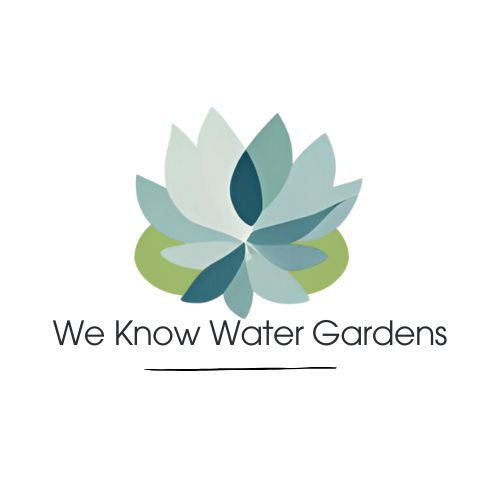The Ultimate Guide to Choosing the Best Solar Pond Pump
on Apr 07, 2023
If you're looking for an eco-friendly and cost-effective way to keep your pond healthy and beautiful, a solar pond pump may be the perfect solution. But with so many options on the market, it can be overwhelming to choose the right one. Our guide will walk you through the key features and considerations to help you make an informed decision.
How do Solar Pumps Work?
Before diving into the world of solar pond pumps, it's important to understand the basics. Solar pond pumps use energy from the sun to power the pump, which circulates water in your pond. This not only keeps the water moving and oxygenated, but also helps prevent algae growth and keeps your pond healthy. Solar pond pumps are eco-friendly and cost-effective, as they don't require electricity from the grid and have minimal maintenance needs.
Solar pumps are water pumps that are powered by solar energy. They work by converting the energy from sunlight into electrical energy, which is then used to power the water pump.
The basic components of a solar pump system include the solar panels, and the pump itself. In some cases a controller and battery may also be incorporated. The solar panels are typically installed on a mounting structure, such as a pole and should mounted facing north . Some panels come with a mounting or they can be attached to a post or even a roof top if close by .
The pump itself is a specialized water pump that is designed to be powered by DC electricity, which is the type of electricity produced by solar panels. The pump then circulates the water in the pond which increases the amount of oxygen in the water.
Consider the Flow Rate and Head Height.
When choosing a solar pond pump, it's important to consider the flow rate and head height. The flow rate refers to the amount of water the pump can circulate per hour, while the head height refers to the maximum height the pump can lift water. These factors will depend on the size of your pond and the desired water flow. Be sure to choose a pump with a flow rate and head height that meets your specific needs.
What you are planning to use the pump for will help you decide on how powerful the pump is that you and in turn how large the panel you need to make it run efficiently. Factors to consider include, whether the pump needs to run continuously, how high the water needs to lifted so this might be the case if you are using to run a waterfall and whether it is feeding water to separate filter. Once you know this you can choose an appropriate pump.
What size panel do I need for my Solar pump?
The size of the solar panel you need for your solar pump depends on several factors, including the power requirements of the pump, the amount of sunlight available in your location, and the efficiency of the solar panel.
To determine the size of the solar panel you need, you first need to find out the power requirements of your pump. This information should be provided in the manufacturer's specifications or user manual. Once you know the power requirements, you can calculate the wattage of the solar panel you need. That said, most pumps come with a panel that is approximately match to the performance of the pump so most of the guess work will be taken out it for you.
As a general rule of thumb, you will need a solar panel with a wattage that is higher than the wattage of your pump. The exact wattage will depend on the efficiency of the solar panel and the amount of sunlight available in your location. In most cases, a solar panel with a wattage that is 1.5 to 2 times higher than the wattage of the pump should be sufficient.
For example, if your pump requires 200 watts of power, you may want to use a solar panel with a wattage of 300 to 400 watts. However, it's important to note that this is just a rough estimate, and you should consult with a professional or use an online solar panel sizing tool to get a more accurate estimate based on your specific situation.
Do I need a Battery with my Solar Pump?
If you have a direct solar pump system, which is the simplest and most common type of solar pump, then you do not need a battery. This type of system works by directly connecting the solar panels to the pump, and the pump only operates when there is sufficient sunlight available. However, the downside of this system is that the pump will not work when there is no sunlight, such as on cloudy days or during the night.
On the other hand, if you have a solar pump system with a battery, then the battery serves as a backup power source for the pump. This type of system stores the excess energy generated by the solar panels in the battery, which can then be used to power the pump when there is no sunlight available. The advantage of this system is that the pump can continue to operate even in the absence of sunlight, providing a more reliable water supply.
Having a battery backup for your solar pump system is especially useful if you live in an area with inconsistent sunlight or if you need a more reliable water supply. However, adding a battery can increase the cost and complexity of the system, so it's important to weigh the benefits and drawbacks before deciding whether or not to include a battery in your solar pump system.
Installing the Solar Pond pump
-
Select a location for the solar panel: The solar panel that powers the pump should be placed in a location that receives plenty of sunlight throughout the day. Choose a spot that is free from shade, and make sure it faces south if you are in the northern hemisphere, or north if you are in the southern hemisphere.
-
Assemble the pump: Before assembling the pump, carefully read the manufacturer's instructions that come with it. Follow the instructions to assemble the pump, including attaching the solar panel to the pump. Most solar pumps require on tools to connect them to the panel.
-
Install the pump in the pond: Place the pump in the pond, making sure that it is submerged in water. The pump should be placed at a depth that allows it to take in water and circulate it effectively. If you are connecting it to a hose, ensure you use the biggest diameter possible to maximise flow rate.
-
Connect the solar panel: Connect the solar panel to the pump, following the instructions that came with the pump. The solar panel should be placed in a location that receives plenty of sunlight, and the pump should be connected to the solar panel using the provided cables.
-
Test the pump: Turn on the pump and make sure it is working correctly. If it is not, double-check the connections, the solar panel placement, and the pump placement. If it is connected directly to the panel, and there is adequate light then it should start immediately
By following these steps, you should be able to successfully install a solar pond pump and enjoy the benefits of a healthy, flowing pond without relying on traditional electricity sources.
Share



